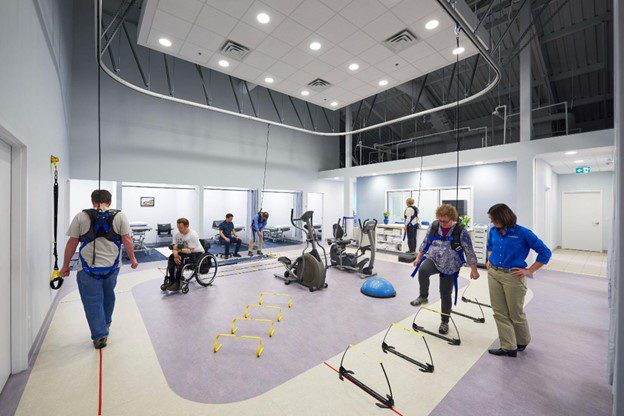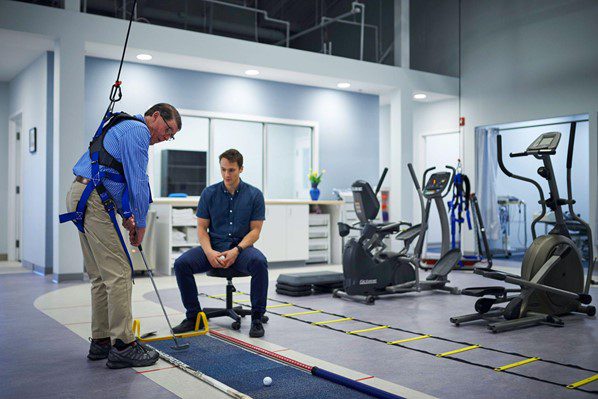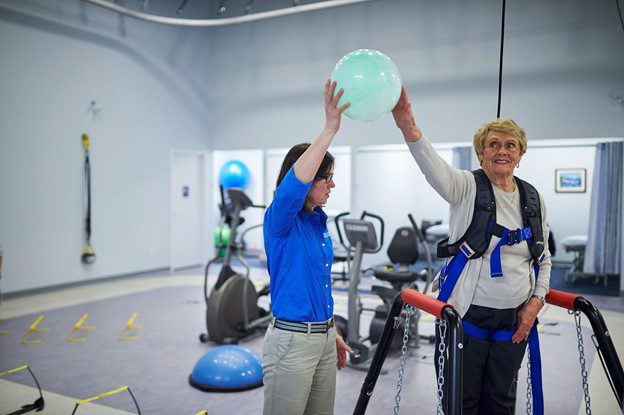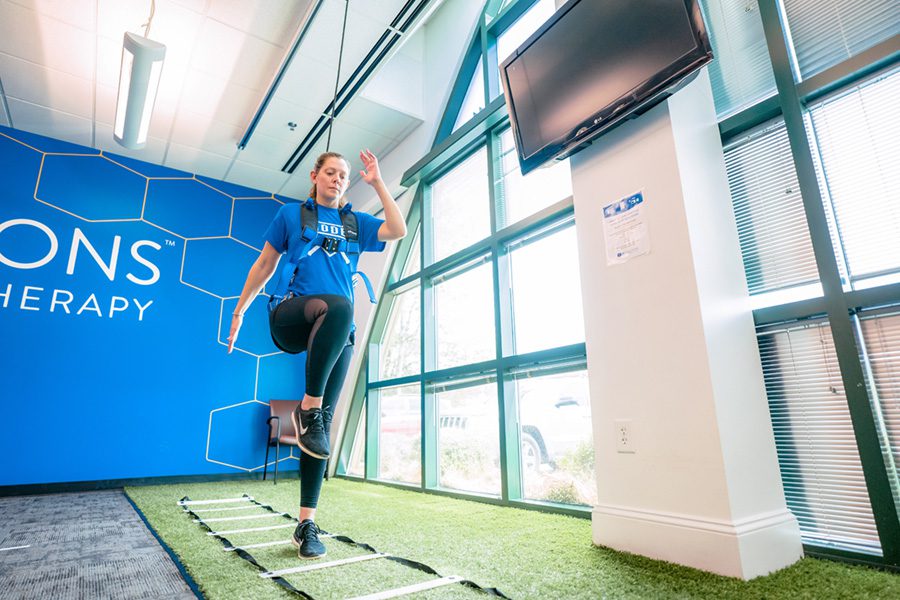Fall Prevention in Physical Therapy: How Physical Therapy Equipment Enhances Mobility and Reduces Falls

Falls are a serious concern, especially among older adults. According to the World Health Organization, falls are the second leading cause of accidental or unintentional injury deaths worldwide. In the United States alone, millions of older adults experience falls each year, leading to hospitalizations, injuries, and even death. Physical therapy plays a crucial role in fall prevention by enhancing mobility and reducing fall risk through the use of specialized equipment. In this blog, we’ll discuss how physical therapy equipment empowers patients to maintain their mobility, regain strength, and minimize the risk of falls.
The Importance of Mobility in Fall Prevention

Mobility plays a crucial role in fall prevention for several reasons:
1. Balance
Good mobility helps maintain balance, reducing the risk of falls. As people age or experience health issues, their balance can deteriorate, making them more prone to falling.
2. Strength
Mobility exercises often involve strength training for the legs, core, and other muscle groups. Strong muscles provide better support and stability, reducing the likelihood of falls.
3. Flexibility
Flexible muscles and joints allow for a better range of motion and agility, making it easier to react to changes in balance or the environment. This agility can help individuals avoid falls or recover from slips or stumbles more easily.
4. Coordination
Mobility exercises often focus on improving coordination and proprioception (awareness of body position), which are essential for navigating obstacles and maintaining stability.
5. Independence
Maintaining mobility allows individuals to remain independent and perform daily activities safely. Loss of mobility can lead to reliance on assistive devices or caregivers, increasing the risk of falls due to decreased activity levels and muscle strength.
6. Psychological Well-Being
Being able to move freely without fear of falling boosts confidence and mental well-being. Conversely, fear of falling can lead to decreased activity levels, which can further reduce mobility and increase the risk of falls.
7. Preventative Measures
Engaging in mobility exercises and activities can help identify and address mobility issues before they become serious, reducing the risk of falls in the long term.
Overall, improving and maintaining mobility is essential for fall prevention as it addresses multiple factors that contribute to falls, including balance, strength, flexibility, coordination, independence, and psychological well-being.
How Does Physical Therapy Equipment Enhance Mobility?

Physical therapy equipment enhances mobility by providing support, resistance, or assistance during exercises and therapeutic activities. Here’s how:
1. Support and Stability
Physical therapy equipment can help provide support and stability to individuals with mobility impairments. They allow patients to practice walking or standing with reduced risk of falling. This helps build confidence while improving mobility over time.
2. Targeted Resistance
Resistance during therapy helps strengthen muscles and improve joint stability, contributing to better mobility and control over movements.
3. Assisted Movement
Some equipment can assist individuals in moving their limbs through a range of motion. This can be particularly beneficial for patients with limited mobility or weakness, helping them regain movement and function.
4. Feedback and Monitoring
Certain equipment provides feedback on movement patterns, balance, and gait. This feedback helps therapists and patients track progress and make adjustments to improve mobility and reduce the risk of falls.
5. Customization and Adaptation
Some physical therapy equipment can be adjusted and customized to meet the specific needs of each individual. For example, the height and harness sizing of an overhead track system can be tailored to each patient, ensuring optimal support and alignment during walking practice.
6. Engagement and Motivation
Using equipment can make therapy sessions more engaging and motivating for patients. Interactive tools or gamified exercises encourage active participation and compliance, leading to better outcomes in terms of mobility improvement.
Overall, physical therapy equipment serves as a valuable tool in enhancing mobility by providing support, resistance, assistance, feedback, and customization tailored to the individual’s needs and goals.
How can Physical Therapy Equipment Promote Independence and Confidence?

One of the primary goals of physical therapy is to promote independence and confidence in patients. By improving mobility and reducing fall risk, physical therapy equipment enables individuals to perform daily activities with greater ease and safety. Whether it’s walking, climbing stairs, or getting in and out of chairs, patients gain the confidence to navigate their environments without fear of falling. This independence enhances their quality of life and promotes overall well-being.
What Equipment Helps Improve Mobility and Reduce Falls?
Several different types of equipment can help patients improve mobility and reduce the risk of falls in physical therapy. Some examples include:
1. Overhead Track & Harness Systems

Overhead track and harness systems like the Solo-Step Safety Overhead System protect patients during rehabilitation. The Solo-Step Overhead Track System is a ceiling-mounted aluminum track system that connects to a patient via harness and lanyard. During balance, gait, and strength training, patients are protected from dangerous falls. This allows patients to challenge themselves without fearing falling, giving them more strength and confidence to attempt challenging exercises.
With the Solo-Step Overhead Track & Harness System, you can expect:
- A decrease in the fear of falling down
- An increase in patient confidence
- The ability to challenge patients during physical therapy and rehabilitation
- A safe environment for balance, strength, and gait training
- 100% safety from any fall-related injuries
The Solo-Step Overhead Track & Harness System can be utilized with all of the following pieces of equipment to maintain a safe and effective balance training program.
Click the button below to learn more about the Solo-Step Overhead Track & Harness System!
2. Balance Training Equipment
Tools like balance boards, wobble cushions, and therapy balls can help improve balance and stability over time. Here’s how they work:
Wobble Cushions
Wobble cushions, also known as balance discs or stability cushions, are inflated discs made of soft, pliable material. They have an unstable surface, which challenges the user’s balance.
By standing or sitting on a wobble cushion, the body is forced to make constant micro-adjustments to maintain balance. This engages the muscles of the core, legs, and feet, strengthening them over time.
Regular use of wobble cushions can help improve proprioception (the body’s awareness of its position and space), which is crucial for balance and coordination.
Balance Boards
Balance boards consist of a flat platform that sits atop a fulcrum, creating an unstable surface. Users stand on the platform and must maintain balance while it tilts in different directions.
Using a balance board activates the muscles of the legs, core, and ankles as they work to stabilize the body. This strengthens these muscles and improves overall balance and stability.
Balance boards can also be used to simulate real-life balance challenges, such as those encountered during sports or daily activities.
Therapy Balls
Therapy balls, also called stability balls or exercise balls, are large, inflatable balls used for various exercises, including balance training.
Sitting or lying on a therapy ball engages the core muscles as they work to stabilize the body. This helps improve core strength and stability, which is essential for overall balance.
Therapy balls can also be used for dynamic exercises that challenge balance and coordination, such as rolling the ball while maintaining balance or performing exercises while lying on the ball.
3. Physical Therapy Equipment

Parallel Bars
Parallel bars are a set of horizontal bars used to support individuals during balance and walking exercises. They provide stability and support, allowing users to focus on improving their balance without the fear of falling.
By holding onto the parallel bars, individuals can practice weight shifting, stepping, and other movements that challenge balance and coordination.
Over time, as balance and strength improve, individuals can gradually reduce their reliance on the parallel bars, eventually performing exercises and walking without support.
Resistance Bands
Resistance bands are elastic bands of varying strengths that provide resistance during exercises. They can be used to target specific muscle groups involved in balance and stability.
Resistance bands can be incorporated into exercises that target the muscles of the legs, core, and upper body, all of which play a role in maintaining balance and stability.
By performing exercises with resistance bands, individuals not only strengthen muscles but also improve their proprioception and body awareness, which are essential for balance.
Exercises with resistance bands can be tailored to target specific areas of weakness or imbalance, helping individuals address their unique stability needs.
Treadmills
Treadmills equipped with body weight support systems like the Solo-Step allow individuals to walk or run with reduced weight-bearing, making it easier to practice gait and improve mobility.
These systems provide support as needed, allowing for the gradual progression of weight-bearing activities during rehabilitation.
Utilizing these different pieces of equipment will allow your patients to gain strength, balance, and confidence during physical therapy and rehabilitation, leading to happier and healthier lives.
Falls are a significant concern, particularly among older adults. Physical therapy offers effective strategies for fall prevention through the use of specialized equipment. By focusing on enhancing mobility and reducing fall risk, physical therapy empowers patients to regain strength, improve balance, and maintain independence. Through targeted exercises and the use of equipment like the Solo-Step, balance boards, treadmills, and more, patients can address various aspects of stability and strength crucial for preventing falls. By promoting mobility and confidence, physical therapy equipment plays a vital role in helping individuals lead safer and more active lives, ultimately improving their overall well-being and quality of life.
Click the button below to learn more about the Solo-Step Overhead Track & Harness System and how it can help keep your patients safe from falls!